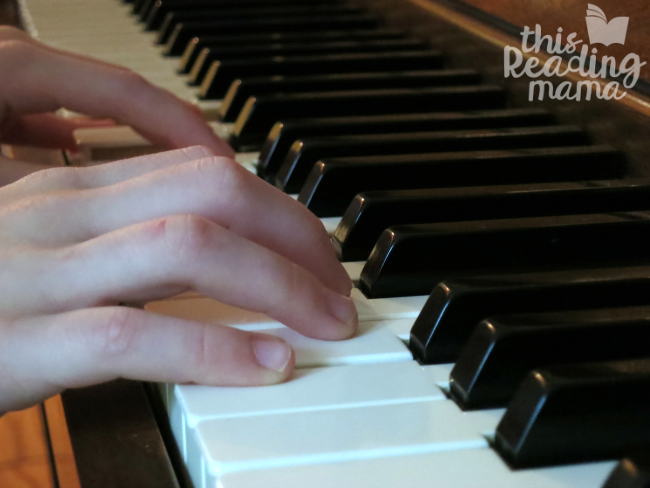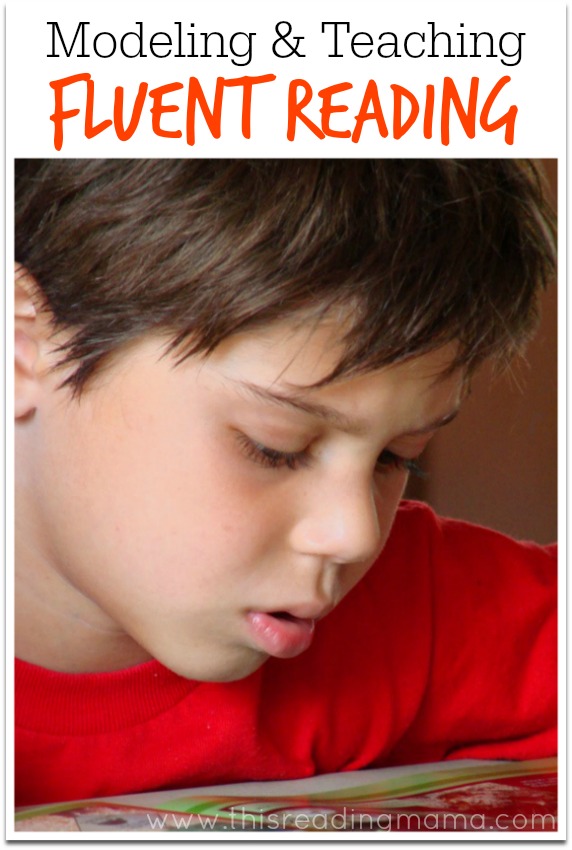We all want to develop reading fluency in our learners, right?
After all, fluency has a direct correlation with reading comprehension. Learners who struggle with reading fluently often have a hard time making meaning of what they’re reading. On the other hand, learners who read fluently usually* have an easier time making meaning of what they are reading.
*I say “usually” because sometimes readers struggle to make meaning, even with fluent reading.

*This post contains affiliate links.
What is Reading Fluency?
Before we dive into fluency, I want to quickly give you a working definition for fluency. Fluency includes things like:
- reading at a good pace- not too fast and not too slow
- using punctuation to tell your voice when to stop, slow down, or raise up (like at the end of a question)
- reading in meaningful phrases, like I talk about with in my Reading Fluency and Phrasing post
- reading with expression, using emotions
- reading accurately and smoothly
Develop Reading Fluency with Re-Reading
Yes, we definitely want our readers to develop reading fluency. But there’s a BIG BUT in the way.
We want fluent reading, BUT we can’t expect reading fluency the first time learners read a new text.
Now, I’m a musical person. My undergrad was music. And I love to think about reading fluency in musical terms. {Just hang in there. Even if you’re not a musical person, it will make sense.}

My daughter is taking beginning piano lesson. Each week, she gets a new set of pieces to learn.
On her first time practicing a piece, it would be very silly of me to say, “No, no, no. Just stop. You need to focus on phrasing that correctly right there. And for goodness sake, look at all the dynamics. Don’t you see that you’re supposed to be playing quietly here and then gradually getting louder? You’re supposed to be expressing the emotions of the piece, not just plucking notes!”
The first time she practices a piece, I do none of that. She has to learn the notes first. Expression and phrasing {the making music part} comes AFTER note learning!
You see? It’s the SAME with reading fluency!
Books I HIGHLY Recommend for Some Fluency Fun
Reading Fluency with Beginning & Struggling Readers
This is true for most readers, especially beginning readers and struggling readers!
Beginning readers are still learning the basics of reading, so their reading may not sound fluent with a text until the third or fourth time reading it.
And a Kindergartner’s fluent reading will not sound the same as a second grade fluent reader. In general, a second grader has much more knowledge about things like phrasing, expression, and punctuation.
Struggling readers, no matter their age, will often be developmentally behind in many areas. One of those is fluency. Often, their brains are so focused on figuring out the words that it’s very hard to focus on anything else.
More Ideas on Reading Fluency:
Modeling & Teaching Fluent Reading
Improve Reading Fluency and Phrasing
Enjoy teaching!
~Becky




Becky- I have been a reading/learning specialist for 34 years. I absolutely love your articles, your activities and your explanations. You are extremely knowledgable and you really have an understanding about how children learn. Thank you! Beth S
Wow. 34 years! That’s awesome. I bet you’ve seen lots of programs come and go in that amount of time. 🙂 Thank you stopping by to comment. I love teaching and love sharing, too!